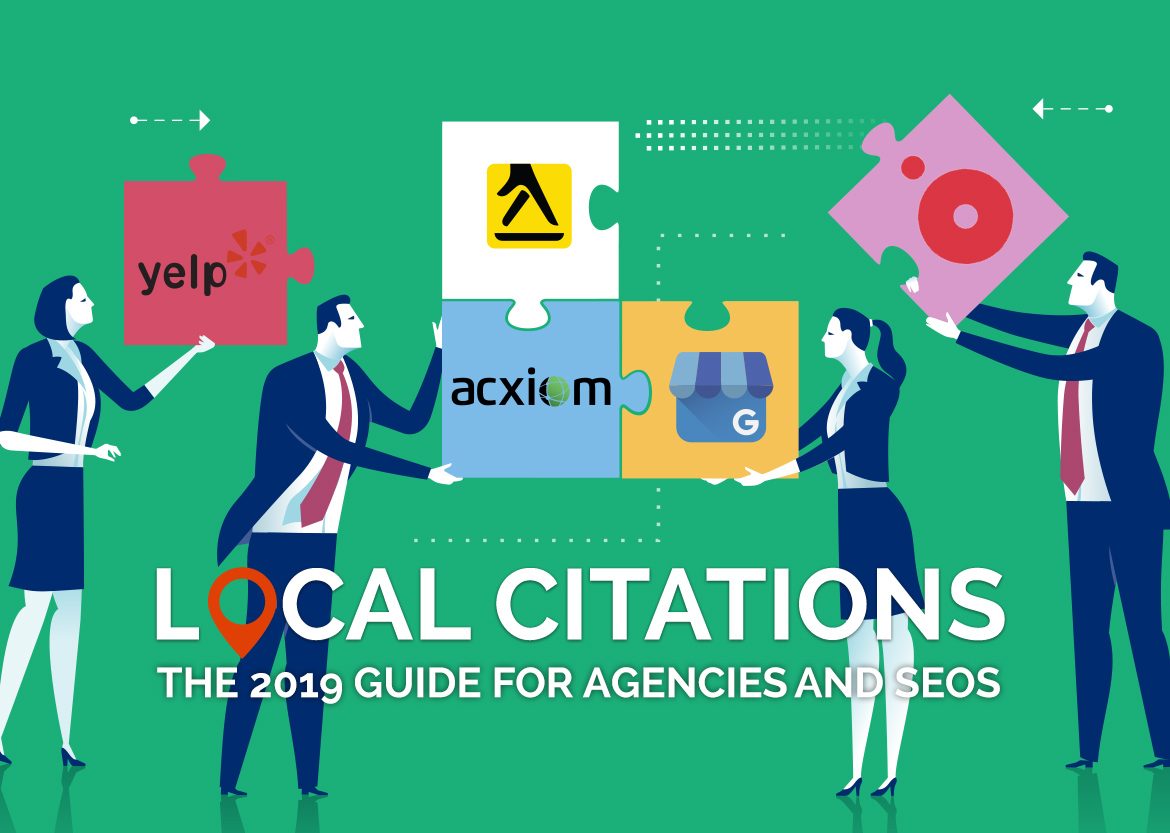Citations for local search tend to be one of those topics that you fail to realize is such a vast rabbit hole of information until you’re already in it. The common assumption is that a citation strategy is merely about having directory listings that all match, but it goes far deeper.
For local search, citations aren’t the only game in town. To compete in even the most uncompetitive verticals, you still need to focus on several other local ranking factors to get ahead, but citations should be a major part of that.
Additionally, with ‘natural’ organic link building being so difficult for local businesses that tend to shy away from having unique content to link to, citations are an even more important part of your ranking toolkit.
So before we get stuck in, let’s make sure we’re all on the same page.
1) Local Citations 101
So I promise not to make this too high level, but let’s clear up a few common misunderstandings first. For the purpose of this guide, a citation is simply an online reference to a business entity, that typically (but not always) contains
- A Business Name
- A Business Address
- A Phone Number
And in the case of directory citations, may also contain
- Logos and Photos from the business
- Opening Times
- A brief description of services and categories the business belongs to
This is where the term NAP comes from, short for Name, Address, Phone Number.
Apparently, NAPN wasn’t as catchy.
Way back when …
If you’re familiar with SEO, you’ll know that for years Google has used backlinks as a primary method of determining how valuable a particular web resource is. By looking at the number of links, and the authority of the pages those links come from, the Google ‘brain’ can figure out which results are trustworthy and which ones aren’t.
When Google ventured into local search, that same model had a few flaws.
Think of your typical local business like a dentist, or a local builder. It’s highly unlikely they’re going to have a significant number of backlinks to their site from a bunch of well trusted resources … unless they paid one of those ‘super-legit’ guys who send you an email claiming to get you a backlink on Forbes, Huffington Post or Inc.com.
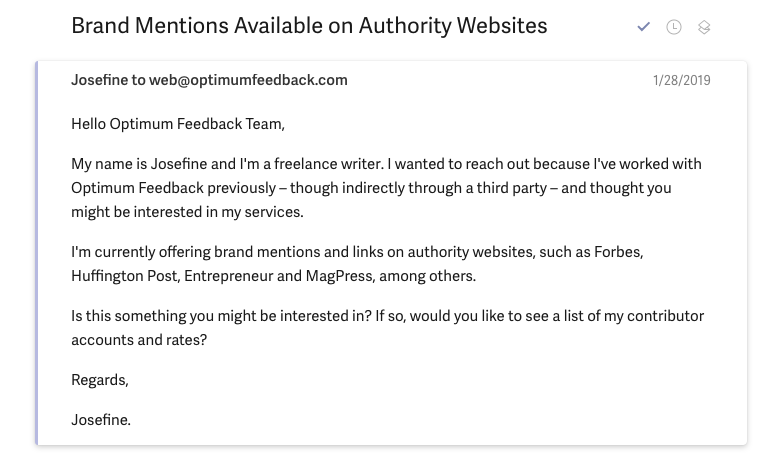
Because local businesses tend to not attract a lot of (natural) backlinks, they needed another system of ‘voting’ or, another way to determine
a) if a business was real and
b) how trusted that business was.
One of the ways to solve this problem was to use citations as opposed to typical backlinks, mostly because citations already existed.
Many local businesses already had multiple citations – listings in directories that verified the businesses name, address and phone number. The more verifications Google could find, the more likely it was that information was correct, and that the business was legit too.
So this gave rise to citations being the ‘new backlink’ for the purposes of local SEO.
Structured vs Unstructured Citations
A citation will typically have a Name, Address and Phone Number but this isn’t always the case.
A structured citation is one that tends to follow this format and usually, is the type of citation you’ll find on business directory sites like Yelp or the Better Business Bureau.
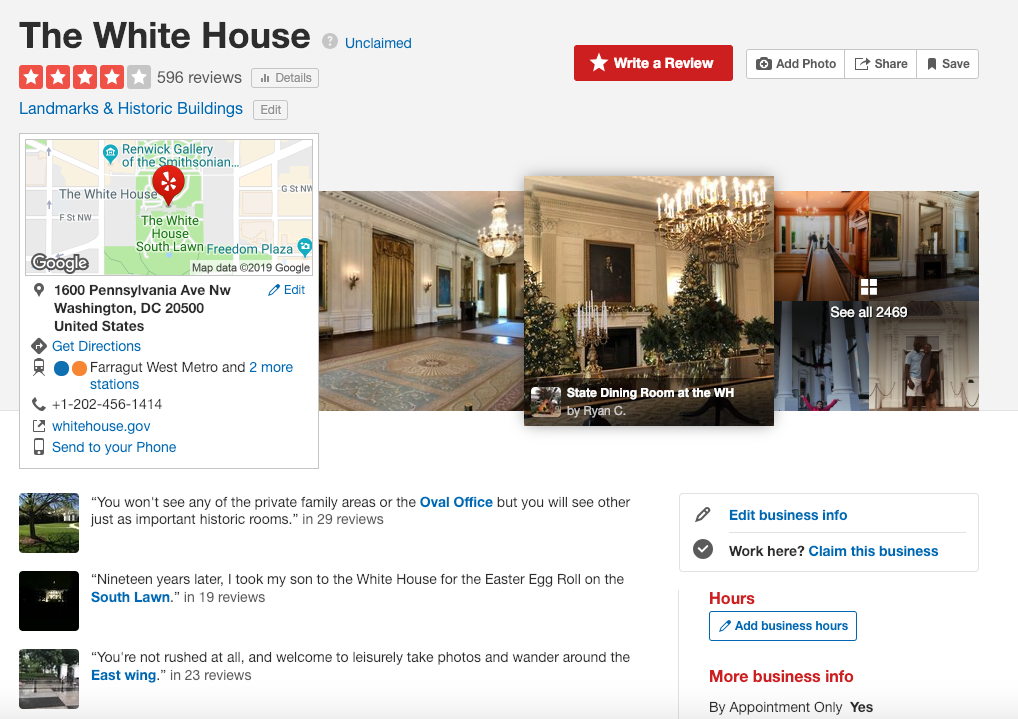
On the flip side, there are unstructured citations.
There’s a bit of a grey area on the web between different sources about the exact definition of an unstructured citation, and whether it needs to contain a link (we think it does).
You could argue these are a category of their own … but ultimately, they’re just plain ‘ol backlinks. These tend to exist in social media profiles, local blogs or event guides or as links in press releases and company announcements.

Do Follow vs No Follow vs No Link at all
Unlike a typical backlink, a citation doesn’t need to have a do-follow link back to the company’s site to be valuable. In fact, a structured citation doesn’t really need a link at all.
The true value in citations are the mention of a business which search engines and aggregators use to verify the accuracy of information they probably already hold.
2) Why Local Citations Matter
Citations matter because they directly affect local search. Local search matters because that’s where a business’s potential customers are (or soon will be) looking.
Take a dentist for example.
When someone is looking for a new dentist, they’re most likely to do one of the following
- Search Google for ‘dentists’. If they’re on a location-aware device (phone / tablet), or in many cases if they’re on a desktop with location permissions enabled or provided by their ISP, Google will serve local results ahead of the organic ones.
- Look for dentists on a directory like Yelp or the American Dentists Association’s website. Here’s the other value in citations. Not just for helping with search rankings, but also for helping with natural discovery.
- Voice search for ‘dentist near me’, in which case results are pulled with a similar algorithm that determines the results in 1)
- Ask a friend for a recommendation.
While, citations can’t help directly with number 4), they will affect visibility for 1), 2) and 3).
Citations aren’t everything; local organic and map pack rankings are influenced by a large number of factors ranging from reviews, to keywords to the user’s proximity to the searched for business, but they do play a key role.
3) Taking NAPs
Remember how I mentioned citations were like a vote of trust for a business?
Well the accuracy of that business’s details in those citations makes a huge difference. Let’s go back to the core tenet of a citation, Name Address and Phone number.
These details should be consistent across every citation that appears on the web; this part is more important than people realize. It’s probably the most common issue found when businesses do a local audit. They have different (note … different, not incorrect) variations of their company name and address in multiple places, and this often hurts their local online marketing efforts.
There are a few theories floating around about why consistency is so important. Personally, I believe the simplest one is the most likely.
Imagine you have two citations
Stark Industries,
301 – 399 W 41st Street,
Midtown East
New York 10036
(212) 555-5555
and
Stark Industries Inc,
Who knew all those years playing Where’s Waldo as a kid was just training to be great at spotting NAP issues as an adult.
301 – 399 West 41st Street,
NY 10036
(212) 5555555
To us mere humans, the two addresses relate to the same place.
We’d expect the company who has a ‘moonshot’ department … the same company who were working on self-driving car technology over 10 years ago to be able to know these are the same places, but technically it’s not that simple. Google play a game of trust and user experience with its local results.
If you ask for a shoe shop, and it takes you to the wrong place you’re unlikely to use Google Maps again. Worse still, if that shop had closed many months ago you’re unlikely to trust any future results you see.
The results you see first tend to be the ones that Google has confidence in.

Confidence that they exist, they’re legit and that the details are correct. It can only know this by the number of other sites (structured citations) that have identical details.
Going back to the two Stark Industry addresses above, from a machine point of view, they’re very different.
Google will try to match every business location to a numbered entity (i.e. your Google my Business / Places listing) and it does that by comparing text. In a world of 1s and 0s, if the majority of citations fail to match accurately, it can’t be certain that the information it holds is correct as it doesn’t have enough sources to verify it.
Eventually, it’s likely NAP consistency will become a thing of past when Google scales the process of having certainty that two businesses with slightly different names, one at ‘301 – 399 W 41st Street’ and the other at ‘301 – 399 West 41st Street’ are the same business.
But until then, consistency is everything and this is the first thing a good citation campaign should do; correcting inconsistencies on existing citations.
Duplicate Citations
There seems to be a lot of noise about duplicate citations causing major damage to your local SEO efforts. I think this is often poorly explained which causes confusion.
If you had two identical citations on the same site, it’s highly unlikely this would have any adverse effect on your SEO. But then, most directory sites go out of their way to avoid duplicate listings, so the chances of this happening are slim to none.
And if it did, either both citations would be taken into account and they would count as one, or one would be ignored with no harm done.
When people refer to the danger of duplicate citations, they usually mean two citations on the same site with slightly different details. Our Stark Industries example above is a good one.
Because the company name is technically different (one has Inc on the end), a directory that doesn’t match on phone number (which isn’t uncommon, as many chains often have the same national phone number), wouldn’t necessarily know these businesses are the same unless it manages to normalize the address. Even then, it’s possible two businesses exist at the same address as is the case with many business parks.
The real danger in having duplicate citations is that you actually have inconsistent citations. In this scenario it’s easier and better to remove one citation than to fix both.
This is the second thing a citation campaign should do – remove duplicate citations.
The business’s website is a local citation too
People often see their own site as the system of record – the main source of correct information that everything else feeds from, but this isn’t the case.
In a Google dominated search environment, your Google My Business (GMB) profile is probably the primary source of information on your business’s NAP details, which means you should ensure everything on your / your client’s website matches up.
This means treating the address on a homepage / footer / contact pages like a citation, but a super valuable one; it should match the exact format that you’ve decided on (and use on your GMB profile) and be consistent across your entire site.
Previously, best practice for including NAP details on a company’s website was to include a marked up version in the footer so it appeared on every page. Having the details marked up, simply meant including markup (HTML text) around the address details that’s invisible to humans looking at the page, but visible to search engines to help them understand how to structure the data. For example
<span class=’street-address’>301 – 399 W 41st Street</span>
This ‘sort of’ worked, but was a pain in the ass as it required you to edit the actual text on a web page. For more fragile layouts, that might have caused issues.
There are a few recommended markup formats out today (e.g. Microdata or RDFa), but the current favourite seems to be JSON-LD.
The beauty of using JSON-LD to include address data on a site is that you can keep it completely separate from your HTML.
More importantly, it can be injected after the page has loaded, making it easier to add JSON-LD via third party plugins and widgets (which therefore means better adoption among non-technical users and people using WordPress).
So, let’s not get too technical but …
JSON-LD is implemented using Schema.org vocabulary; a joint effort by all of the large search engines to create a unified language to read data on web pages.
Here’s an example of how our fictional Stark Industries company would look in JSON-LD markup:
<script type="application/ld+json">
{
"@context": "http://schema.org",
"@type": "ProfessionalService",
"name": "Stark Industries",
"image": "",
"@id": "",
"url": "https://ironman.com",
"telephone": "(212) 555-5555",
"address": {
"@type": "PostalAddress",
"streetAddress": "301 – 399 W 41st Street",
"addressLocality": "New York",
"addressRegion": "NY",
"postalCode": "10036",
"addressCountry": "US"
},
"geo": {
"@type": "GeoCoordinates",
"latitude": 40.7566026,
"longitude": -73.99029589999998
},
"openingHoursSpecification": {
"@type": "OpeningHoursSpecification",
"dayOfWeek": [
"Monday",
"Tuesday",
"Wednesday",
"Thursday",
"Friday",
"Saturday",
"Sunday"
],
"opens": "00:00",
"closes": "23:59"
},
"sameAs": "https://twitter.com/iron_man"
}
</script>
JSON-LD is effectively just a key and value pair of attributes, that tell the search engines specific information we need them to know about the business.
Unless other formats like Microdata, JSON-LD can technically sit anywhere although it’s best to put it in the <head> tags of a document. It can be inserted statically (literally added to the code of a site as part of the page’s HTML) or inserted dynamically after the page loads via a script or plugin.
You can use our Business Address JSON-LD generator to generate your NAP markup, and insert the code just before the closing </head> tag of a site.
Back to citations, it’s an ongoing process
While a citation campaign is often where local SEO starts, it’s far from being a one-off task.
Citations need to regularly checked and audited because
- Citations change. This can be for a number of reasons, like user edits to the (correct) information that already exists or aggregators pushing incorrect information that overwrites the correct one. Some of this can be remedied by claiming your listings, but it’s often far from always being that straightforward.
- Duplicates appear. Usually for the same reasons as above, duplicates with slight variances on a company name or address can appear on a directory that already has the correct information.
- The company’s information may change over time. This is more relevant to directories that store more than just NAP, for example opening times or services offered.
Fortunately for us, this is where machines can do the heavy listing.
Most citation services will regularly scan and check the validity of the citations a business has online.
4) Where to get citations
The first thing to understand is that not all citations are created equal. In fact, we use ‘citations’ as a broad term to cover a number of different online reference types.
Structured Citations
These are citations that fit our NAP model, or at least they tend to contain structed data. It’s also important to note that here, a citation doesn’t need a backlink to be valuable. It’s about the data being accurate and present.
Structured Citations exist in a few formats:
Business Data Aggregators (aka Local Data Aggregators / Local Search Data Providers)
These companies have a business model of selling data. They rely on us to submit our clean, accurate business data to them … then they sell it back to us and other companies (to market their services to us) at a premium. AKA, the perfect business model.
The problem is, the main aggregators are too large to be ignored as they supply data to a number of mapping services, in-car navigation systems and search engines, including the big G themselves.
In the US, the four main players are
At the time of writing, only InfoGroup allow you to submit your details free of charge. Neustar charge an annual fee and both Factual and Acxiom seem to have moved towards only working with selected partners as of 2018.
Search Engines
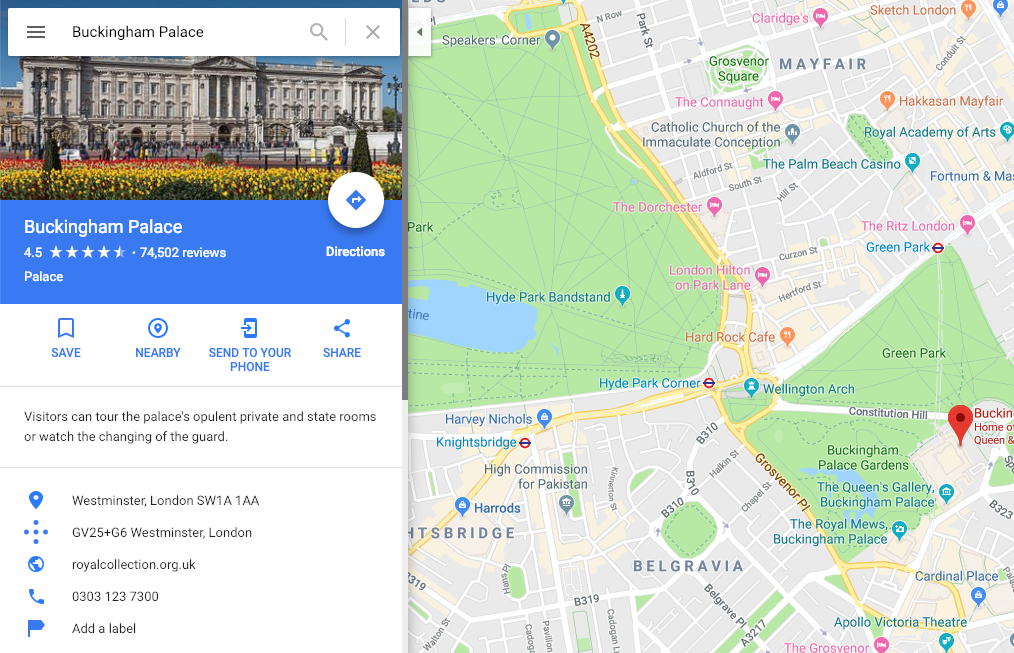
Search engines like Google and Bing maintain their own location and places data partly to aid with creating their mapping products, but also to have a better understanding of the real world. Google My Business is likely to be the main focus for your local search efforts, and it will allow you to claim, update or add your business details to Google’s index.
Technically, as Google My Business seems to be the main hub of local activity, it’s technically not a citation … it’s the main source that uses all the others as citations back to it.
Business Directories

Business directories are the Pareto principle at work. The majority of the results, importance and volume tends to be found in just a few of the general business directories.
The main directories to focus on are
- Yelp
- Apple Maps
- Four Square
- Superpages
- YP
Depending on the business’s location, there may also be some geo-specific directories that are somewhat important too, such as Yell.co.uk in the UK, or TrueLocal in Australia.
Industry / Location Specific Platforms
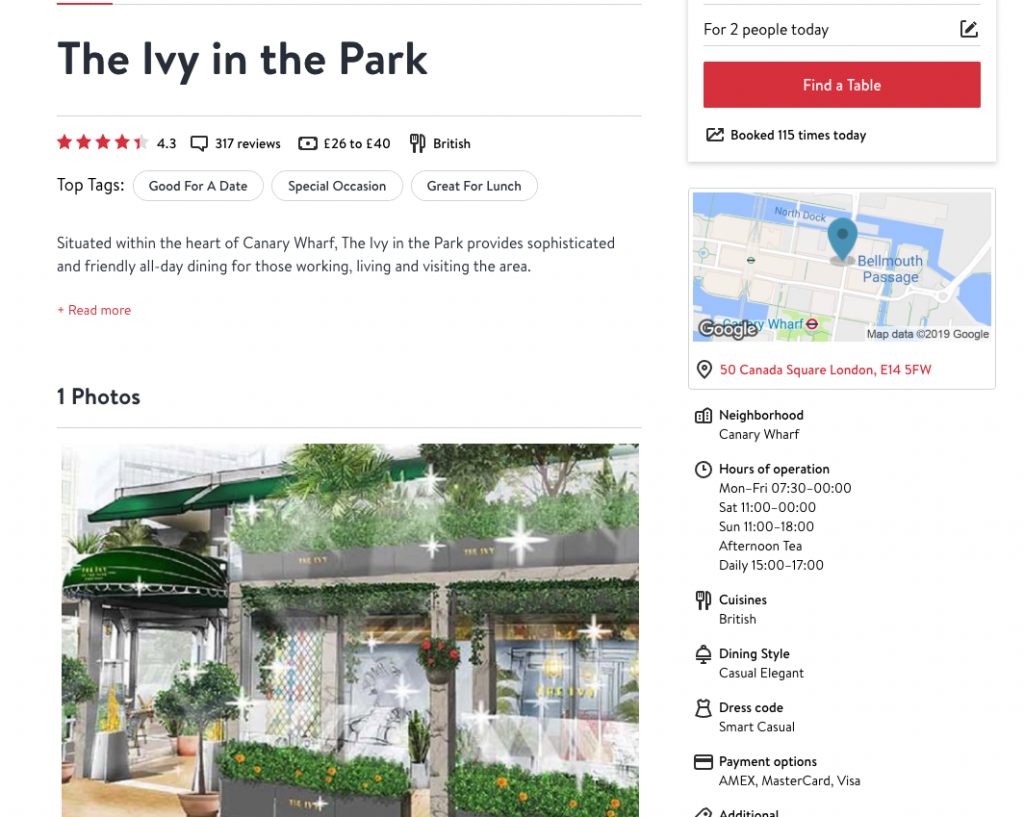
Most verticals have review sites specific to a particular industry. These sites are important, as in addition to giving you a citation, they also help with discovery as a large percentage of a business’s clients are likely to search there too.
Some good examples are Lawyers.com and Avvo for legal professionals, Edmunds for auto dealerships, TripAdvisor and OpenTable for restaurants and bars or WebMD for the medical industry.
In addition to giving a citation and extra opportunities for new customer discovery, you also benefit from customer intent. The type of customer using these directories tend to be highly motivated to buy and at the ‘bottom of the funnel’.
Local Newspaper and Press Websites
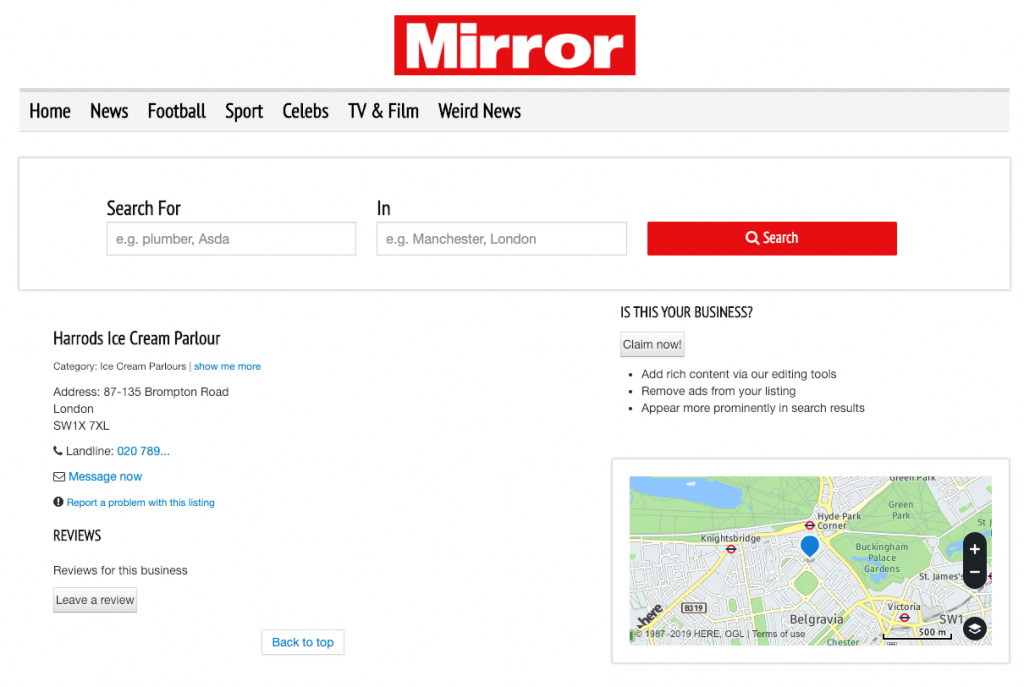
Recently, the print industry has failed to sustain itself through print advertising. Newspapers have shifted their focus online, only to realise that online advertising is a tough game to crack too! Many have started looking for ways to boost their income by increasing page views.
Online local directories have often replaced what used to be classified listings found at the back of the newspapers, and give you a citation with added local semantic value.
Many newspapers syndicate business listings from another source, be it their own database that feeds all the local versions of their newspapers or an independent aggregator.
Data Scrapers
These sites scrape data from many of the places listed above in an attempt to do basic click arbitrage. For the most part, these are pretty low value domains.
In short, don’t bother.
It’s probably not worth the time in listing your business here, especially as they will likely scrape the details from a more credible site anyway.
Trade Association and Chamber of Commerce Websites
Trade association websites provide industry specific citations from pages with high domain authority, although this is usually at the cost of membership to the organization. These are a frequently overlooked source of high value citations. The cost deters people who assume all citations should be free (then go on to pay for low value backlinks on a spammy blog … go figure).
With most of these sites having a basic membership that costs less than $200 per year, the benefit often outweighs the cost, especially in more competitive industries.
Similar to industry specific directories, they also have the bonus of being a potential source of highly motivated leads, lending credibility to the business.
Unstructured Citations
The search industry still seems unclear over where the line is drawn between something being an unstructured citation versus it just being a backlink. In geek terms, we don’t technically know whether they exist independently, or whether one is a subset of the other.
Most sources we’ve come across seem to use the term unstructured citation as a way to generate new content around the time-tested topic of link building, giving it a local spin. Some experts argue that a mention of your business (without the backlink) is enough to provide value, but we’re sceptical.
A structed citation can have value without a backlink (especially when the NAP has been marked up with microdata or JSON-LD), but it’s unlikely that a mere company mention would provide any form of value over all the noise that currently exists on the web.
The logical argument to back this up, is that a search engine would have no idea of knowing which company was being referenced without either a link or an address and phone number.
For the purpose of this guide, we’ll refer to unstructured citations as any reference to a business (regardless of whether or not all the NAP details exist) with a backlink to the business’s website – follow or no-follow.
Local Blogs and Area Guides
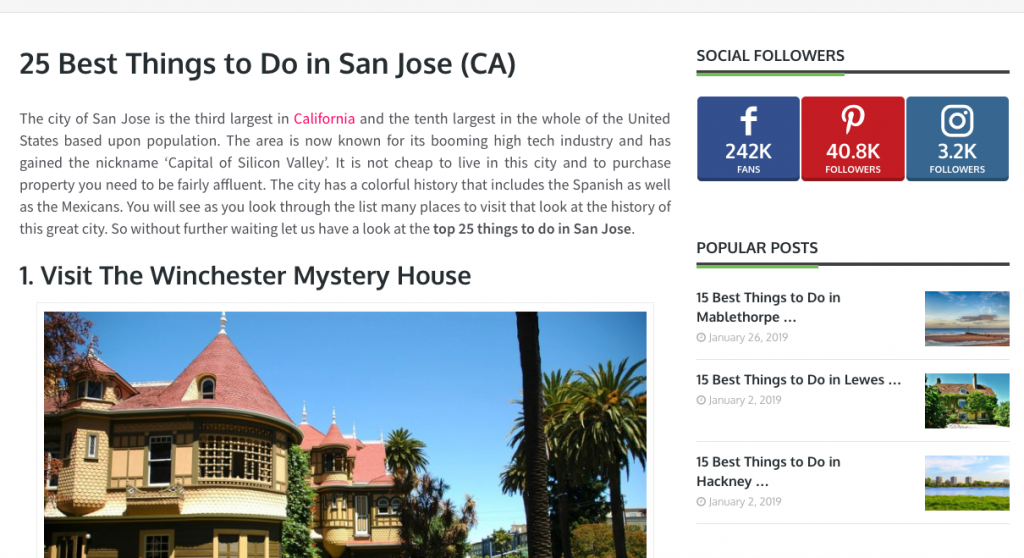
For a B2C product business, offering ‘review samples’ to local bloggers or the editorial team behind area guides is often a good way to get quick links.
Some area guides will maintain active directories or lists of providers and things to do in different categories, so it may be as easy as submitting your details through a dedicated page.
Social Profiles and Question and Answer Sites
Profiles on sites like Twitter or Quora will often let you add the company’s details in the bio, along with a link back to the website. Most of these links tend to be no-follow, but arguably, they still act as a citation of trust for local businesses.
Press Releases
Press releases offer easy to obtain (but relatively low value) backlinks. For a typical local business with little content ranking for their brand, this can be a way to control what people see for brand name searches, especially if the majority of existing SERP results are negative.
To clarify, we’re referring to press releases done through a press release distribution service (ones you pay for) as opposed to a genuine media release about a news-worthy event. The latter will often have significant value from a reputational and a link-value standpoint as links will usually come from media domains with high authority.
5) How many citations are needed
When asked this question we always think about the story with tiger.
To not be eaten, you only need to run faster than the person behind you. Also, being able to recite a parable as an answer to a question makes us feel super smart. The point here is that volume is always relative to the competitive landscape.
For a competitive industry and area – like Realtors in Manhattan for example, the chances are
- Many companies are already working with search professionals, who have completed a full citation audit and submitted their business details to any directory, aggregator or search engine that will listen.
- In these cases, citations alone are far from being enough to compete, so they will also spend time building unstructured citations too.
Compare that to something like a local ironing service in a small UK town. A good number of those businesses still don’t have their own website, yet alone established citations.
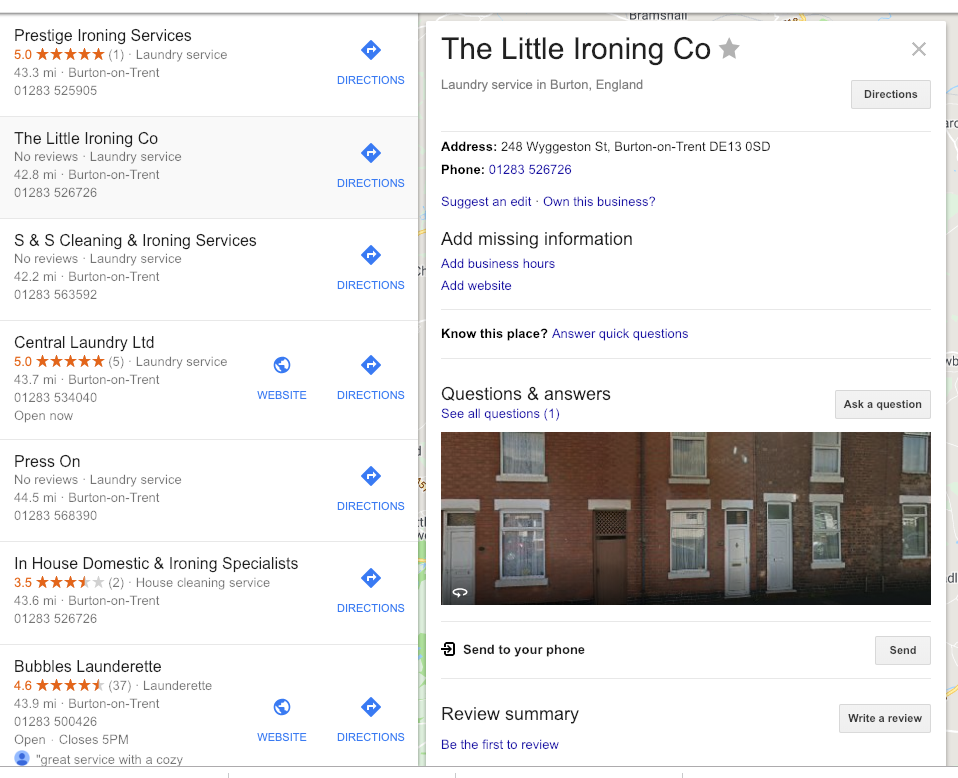
In this situation, citations from the top 30 sites will usually be enough to rank well, coupled with consistent positive reviews, and well completed Google My Business profile.
Citations alone will rarely be enough to see results, but how many citations always comes down to competition in the local area. The more competing businesses = the more creative you’ll need to be in finding (unstructured) citations to gain the edge.
6) Options for building and managing citations
It’s likely that if you’ve read this far, you’re already aware of the many choices you have for building and managing citations.
The unfortunate reality is many people using citation services are unaware of the pros and often hidden cons of the service they’re using. This can have serious consequences further down the line, especially if you do this on behalf of clients.
Manual citation management
This is as unsexy as it sounds.
It’s you, a spreadsheet and many hours filling forms before you slowly lose the will to live! If you’re on an extreme budget (or you have no budget!) then your only option may be to manually build and manage your citations.
This will usually involve
- Creating a list of the primary 30 – 60 structured citation sources in your / your client’s industry, and mapping any existing profile urls onto this list.
- For each citation that exists, also copying and pasting (verbatim) the Company Name, Address and Phone number into adjacent columns in your spreadsheet.
- Claiming all existing citations and updating NAP details to make it consistent with your Google My Business Listing. If you don’t already have a Google My Business listing, creating one should be step 1)
- If no profile exists for a particular citation, creating one. Our advice is to create a separate email address to verify all the new accounts you’ll need to create on these websites to add a citation.
Some accounts (for example Bing or Apple Maps) may require phone verification too, so if you’re doing this on behalf of a client, be sure to pre-warn them and ask them to write down the verification code. - Repeating this process monthly, or at least quarterly if that’s possible.
The issue with structured citations is that they can change. Claiming a listing will give you some control, but it won’t prevent duplicates (and in some cases, minor user edits) being made.
The advantage of managing citations manually is obviously cost; most structured citations are free to obtain. You also have full control over that profile which means it’s less likely that something will change at some point down the line.
The cons … try this for just one location and you’ll see for yourself. If you love repetitive, detail-oriented form filling then this could be the activity for you. For everyone else, it’s a tough job to do.
Automatic Citation Management
On the opposite end of the citation management scale are automatic solutions offered by companies like Yext, and now some of the major data aggregators too.
Yext are currently the most prominent operator in this space, and they have a partnership with many of the main structured citation sites (search engines and aggregators) to push data to them on your behalf. This is great for major brands with hundreds of locations to update in 10s – 100s of places. A manual solution just wouldn’t be feasible.
In exchange, they charge a recurring annual fee of approximately $300 – $400 per location per year.
The pros of this is obvious; changes are almost real-time and only one update has to be made to see that business’s details appear in multiple places.
There is a huge downside though, and many people fail to see this until it’s too late.
Because companies like Yext charge a recurring fee, you’re technically not paying for the citations to be corrected or created. You’re paying for protection. If you keep paying, everything works well. When you stop paying … not so.

While Yext haven’t publicly admitted to deliberately overwriting citations when a user stops paying, there are several reports of outdated, incorrect data appearing the moment the service is stopped. It would seem that citations and listings are all restored to their original state when you stop paying for the service.
In other words, you never really own those correct listings; you just rent them. If you have clients, this can result in an embarrassing situation if you ever stop paying or decide to run with another solution.
Most clients would reasonably expect that work they paid for should remain even when they no longer use you. Trying to explain that you didn’t do it as a malicious act of petty revenge for them ceasing the service with you may not go down so well 🤬
Hybrid Citation Management
In our experience, the best citation management services tend be hybrid ones, that take care of the manual work but don’t tie you into a citation that results in issues should you stop using their service.
Hybrid services will usually:
- Find all of business’s existing citations
- Find any duplicates
- Highlight and fix any NAP issues
- Hand over ownership of the profile to you, so if you ever stop paying you have the guarantee the listings won’t revert back to their original state
- Continue to monitor those profiles and report any changes that would make the citation incorrect.
From an agency’s perspective, hybrid services will also give the most control. Where automatic services will charge a lump sum to create 100s of citations (some of which may have very little value), here you can often choose and pay on a per citation basis, choosing specific citations to fit your campaign needs.
The two most prominent services offering hybrid management (without a recurring annual commitment) are
7) How to build citations
Assuming you’ve already taken care of the business’s website (yep … that’s technically a citation too), the first step is to decide on what type of citation work needs to be done. Building citations for a new business versus an established one are two quite different practices.
New businesses are generally far easier to build citations for, and involve identifying the most valuable citation sources for your industry and prioritising those first. On the flip-side, most established businesses tend to already have at least a handful of existing citations already out there, so your initial focus should also be about claiming, correcting and cleaning up the profiles that already exist in addition to building new ones.
General tips for fixing or manually building citations
Save time with browser extensions
For the most part, building new citations (manually) is simply about finding the link to add or submit a business and filling out the required details. It’s the filling out details part that gets pretty tedious.
You can make the process less painless by using a brower plugin to recognise the most common fields and fill in the details for you. Do a search for “[Insert Your Browser here] form filler plugins” and you’ll see several options appear for almost any browser.
Be sure to check the input before you submit though; these plugins work by reading the names of form fields so it’s not an exact science if those fields aren’t named logically.
Use a dedicated email if possible
The chances of being spammed once you make a submission are close to 120%, so it’s often good practice to create a separate email account to forward confirmations too.
If you’re doing this on behalf of a client, you might also want to use a service that’s not on your domain (e.g. a free email service) so you can hand the account over to the client if they don’t want their own email details associated with the account.
Remember that for the more valuable directories, you also need to complete phone verification, so you’ll need to pre-warn your client and ask them to send you the verification code.
Keep it consistent and organised
You should have a single source of record for NAP information – usually the business’s own website or their Google My Business profile, and ensure every citation matches that format of address and phone number precisely. In time, this will become less important as search engines are easily able to identify two addresses written differently as the same entity, but for now let’s play it safe.
Check all of the details you’re submitting or correcting match and are consistent. This includes the categories you choose for the business too.

